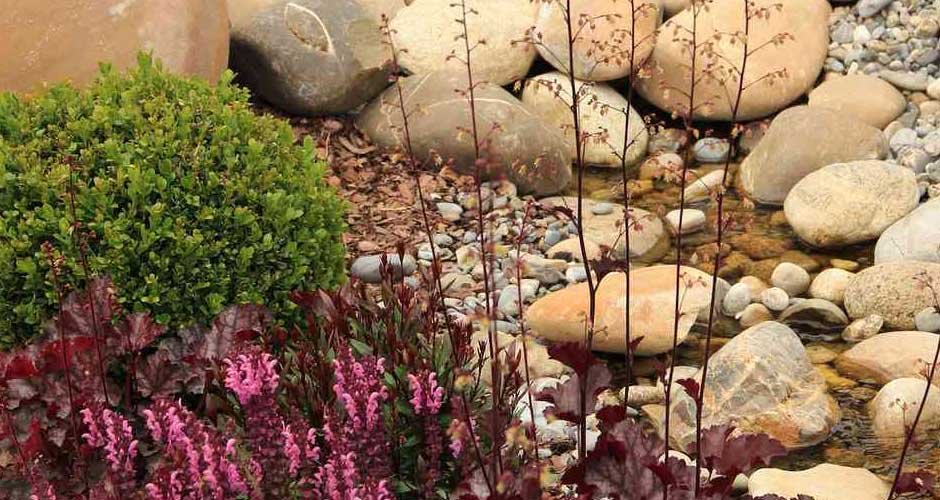Landscaping can be a rewarding project, whether you’re transforming your backyard into a lush garden or creating a beautiful outdoor space for entertaining. But what happens when you encounter a common yet frustrating obstacle: rocky soil? Rocky soil can complicate everything from planting trees to laying foundations, but don’t let it discourage you. With the right approach and a bit of know-how, you can overcome this challenge and create the landscape of your dreams. This guide will explore what to do when your landscaping project hits rocky soil, offering practical tips and solutions to help you navigate this tricky terrain.
1. Understanding Rocky Soil and Its Challenges
Rocky soil is exactly what it sounds like—soil that contains a high concentration of rocks, gravel, and larger stones. This type of soil can be challenging to work with, especially if your project involves digging, planting, or laying foundations. The presence of rocks can make it difficult to achieve smooth, even surfaces and can obstruct root growth for plants and trees. In some cases, rocky soil may even cause drainage problems, leading to water pooling or erosion.
While rocky soil can present these issues, it also offers some unique advantages. For example, well-drained rocky soil can prevent waterlogging, making it a suitable option for certain types of plants. The key is understanding how to work with the soil rather than against it.
2. Assess the Soil Depth and Rock Density
Before you dive into your landscaping project, it’s important to assess the extent of the rocky soil. Determine how deep the rocks go and how densely packed they are. This will give you a better idea of the tools and techniques you’ll need to move forward.
If the rocks are relatively shallow or sparse, you might be able to manage with basic digging tools like shovels and spades. However, if the rocks are more extensive or deeply embedded, you may need to consider more specialised equipment. In cases where large rocks or boulders are present, auger drilling can be an effective way to break through the tough ground and create holes for planting or setting posts.
3. Use the Right Tools for the Job
When working with rocky soil, choosing the right tools is essential. Here are some of the most effective tools and equipment to use when landscaping on rocky terrain:
Hand Tools
- Shovels and Spades: While shovels and spades are standard for most landscaping projects, you’ll want to choose sturdy, heavy-duty models that can handle the resistance from rocks.
- Pickaxe or Mattock: A pickaxe or mattock is ideal for breaking up compacted soil and dislodging large rocks. These tools are especially useful when trying to dig through stubborn rocky patches.
- Crowbar or Pry Bar: If you encounter larger rocks that are too heavy to dig out, a crowbar can give you the leverage you need to lift and move them out of the way.
Power Tools and Machinery
- Auger Drills: For larger projects or areas with deeply embedded rocks, consider using a power auger or auger drill. This tool can bore through the soil and rocks, creating holes for posts, plants, or foundations without the need for extensive manual digging.
- Excavators: For projects involving large areas of rocky soil, hiring an excavator can save you a lot of time and energy. Excavators can dig out rocks and boulders much faster than hand tools.
- Rototillers: A rototiller can help break up rocky soil and prepare it for planting. This tool is especially helpful for mixing soil and improving its texture.
4. Improve Soil Quality
Once you’ve dealt with the rocks, improving the soil quality is a critical next step. Rocky soil often lacks the nutrients and structure that plants need to thrive, so amending it can greatly improve your landscaping results.
Soil Amendment Options
- Organic Matter: Adding organic matter, such as compost, peat moss, or well-rotted manure, will help improve the soil’s fertility and water retention. This is especially important if your rocky soil is low in nutrients.
- Topsoil: In cases where the soil is particularly poor, adding a layer of nutrient-rich topsoil can provide a better environment for plants to grow. Aim for a layer at least 10-15 cm thick to ensure roots have enough space to establish.
- Mulch: Spreading mulch around plants and trees helps retain moisture, reduce weeds, and gradually improve soil structure as it breaks down.
Improve Drainage
Rocky soil is often well-drained, which can be beneficial for some plants but problematic for others that prefer more moisture. If your soil drains too quickly, you might need to improve water retention by adding materials like clay or organic matter to slow down water movement. Alternatively, for areas prone to erosion, adding landscape fabric and gravel can help stabilise the soil.
5. Plant the Right Species
When dealing with rocky soil, it’s important to choose plants that can thrive in these conditions. Some plants are better suited to poor or rocky soil than others, so opting for species that are adaptable can save you time and frustration. Look for plants with deep roots that can reach past the rocky surface to find nutrients, or those that are naturally drought-tolerant and can handle the well-drained conditions of rocky soil.
Here are a few plant options that do well in rocky or poor soil:
- Native Grasses: Many native Australian grasses are well-adapted to rocky and poor soils. Species like Kangaroo Grass (Themeda triandra) or Wallaby Grass (Austrodanthonia) are both hardy and attractive options.
- Succulents: Succulents like Agave, Sedum, or Aloe thrive in well-drained rocky soil and require minimal maintenance.
- Mediterranean Plants: Herbs like rosemary, thyme, and lavender are well-suited to rocky, dry soils, as are Mediterranean shrubs like oleander and olive trees.
6. Use Hardscaping Elements
When working with rocky soil, embracing the natural landscape by incorporating hardscaping elements can add beauty and functionality to your project. Hardscaping involves the use of non-living materials like stone, wood, or metal to create paths, walls, or other structural features in your outdoor space. Rocky terrain is ideal for adding natural stone pathways, retaining walls, or even rock gardens that complement the surrounding environment.
Stone Pathways and Steps
Instead of trying to remove all the rocks, consider using them to create stone pathways or steps. This can turn a challenging area into a beautiful, rustic feature that enhances your landscape.
Retaining Walls
If your rocky soil is part of a sloped area, building a retaining wall can help manage the terrain and prevent erosion. Retaining walls made from stone or brick are both practical and visually appealing.
7. Consider Raised Beds or Terracing
If planting directly in rocky soil proves too difficult, raised beds or terracing can be an excellent alternative. Raised beds allow you to add nutrient-rich soil without having to dig deep into the rocky ground. They also provide better drainage control and make it easier to plant and maintain gardens in challenging terrain.
Terracing is another option for sloped, rocky areas. By creating flat levels or steps, you can manage water flow and make planting more accessible while taking advantage of the natural rock formations.
8. Professional Help When Needed
Sometimes, despite your best efforts, rocky soil can present challenges that are difficult to manage on your own. In such cases, don’t hesitate to seek professional help. Landscapers and soil experts can provide valuable advice, and if heavy machinery is required, they’ll have the skills and equipment to handle the job efficiently. A professional assessment can also help you determine the best course of action for long-term success.
Turning Rocky Soil Into a Landscaping Opportunity
Rocky soil doesn’t have to derail your landscaping dreams. With the right tools, techniques, and plant choices, you can turn a difficult situation into a unique and beautiful outdoor space. Whether you use auger drilling to break through tough ground, amend the soil with organic matter, or embrace the natural landscape with hardscaping, your project can still thrive. With a little creativity and determination, you’ll overcome the challenges of rocky soil and create a landscape that’s both functional and stunning.












